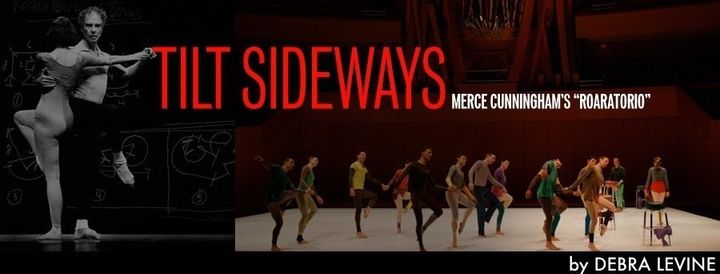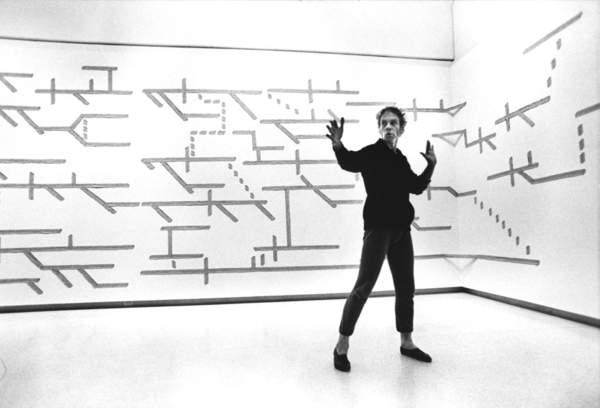
This piece was written in collaboration with Hannah Krafcik.
The Walker Art Center's ten-day celebration, "The Next Stage: Merce Cunningham at the Walker Art Center," opens this coming Friday, October 28th, and runs through Sunday, November 6th. This celebration symbolizes the end of a collaboration between the Walker and Merce Cunningham Dance Company (MCDC) that spans almost 50 years. The event includes a new exhibition featuring visual art pieces from long-time MCDC collaborator, Robert Rauschenberg. The celebration also includes a number of performances by the company, as well as a talk and workshop led by dance icon and former Cunningham dancer, Valda Setterfield. In accordance with Merce Cunningham's wishes as documented in MCDC's Legacy Plan, the company is in the midst of touring for two years before disbanding permanently in December 2011. The company returns to the Walker November 4 - 6 as part of the last leg of this Legacy Tour.
As MCDC wraps up the tour and the Walker kicks off its celebration of their formidable collaboration, we take a moment to ask: what are the proven ingredients for such a long-lasting relationship within the arts community?
1) Adequate funding is certainly key, and the Walker is fortunate to have a sizable endowment, which covers much of it's operating cost, leaving a large amount of the money the Center raises for the development of new work, artists, and audience development. Additionally, a grant from the NEA allowed the Walker to make a landmark, multi-year, multi-work commitment to MCDC during the 1980s and 1990s. Funding, however, is not the only ingredient for healthy relationship building and artist support.
2) The Walker's ingenuity and persistence in supporting multidisciplinary art making allowed them a unique relationship with MCDC, which has stood the test of time. Moving into the future, the Walker will continue to perpetuate the tradition of Merce Cunningham's work at the intersection of many different art forms.
According to the Walker's Senior Curator of Performing Arts, Philip Bither, Cunningham's work was sometimes inaccessible or difficult for audiences to engage with; thus, the Walker developed ways for the surrounding community to learn about and forge its own relationship with the company. Over the years, Merce Cunningham, John Cage, and their ensemble traveled to the Walker to perform, lead workshops, teach classes, make site-specific work; and, sometimes, they came just to chat with community members about life and art-marking. This willingness to embrace and support the growth of an artist is often overlooked when arts centers are focused on their own survival, yet the Walker's relationship with MCDC exemplifies a good case for the mutual benefits of working collaboratively to engage audiences. For instance, in 2008 the Walker presented MCDC's Ocean in the granite Rainbow Quarry, which lies 150 below the surface of the earth. Audiences were bussed into the quarry for this sold-out event, and the total number of attendees at each performance was an impressive 1150.
This week's program begins with a piece by Jerome Bel that gives the audience a rich and personal look into one dancer's experience inside the Cunningham Company. On October 28th, the Walker's ten-day celebration will commence with a work written and performed by Cédric Andrieux but shaped and directed by Bel. The piece provides a behind-the-scenes look at Andrieux's career, from his training in France to his many years as a principal dancer with the MCDC. This work offers insights into Cunningham's visionary concepts as well as the iconic image of the individual dancer. An unexpected and brilliant addition to the celebration, the inclusion of Bel's work highlights not only the Walkers commitment to providing its audience with entry points into Cunningham's work, but also to cultivating an audience for younger artists.
3) In its presentation of contemporary multidisciplinary art, the Walker has functioned as a model for numerous other institutions including Yerba Buena Center for the Arts, The Wexner Center for the Arts, The Museum of Contemporary Art, REDCAT and Diverseworks Art Space. According to the Walker's Mission Statement, "Focusing on the visual, performing, and media arts of our time, the Walker takes a global, multidisciplinary, and diverse approach to the creation, presentation, interpretation, collection, and preservation of art." The Walker has demonstrated particular creativity and innovation in fostering the work of MCDC. For instance, in addition to supporting Cunningham through a total of nine residencies, the Walker has commissioned three works by Cunningham, all of which were site-specific. In fact, the forthcoming Legacy Tour performance marks the sole performance for the Cunningham Company on the Walker's proscenium stage.
In November, the Walker's curtains may close on MCDC, but the story will not end. It goes without saying that the current lack of funding and resources for the arts heightens a longing for secure relationships between artists and well-funded presenting organizations. Prosperous and long-standing relationships between such entities may offer a sense of fortitude and constancy during these tumultuous economic times; and, at this moment, we can look to Merce Cunningham Dance Company's relationship with The Walker Arts Center as a model of such artistic symbiosis.
